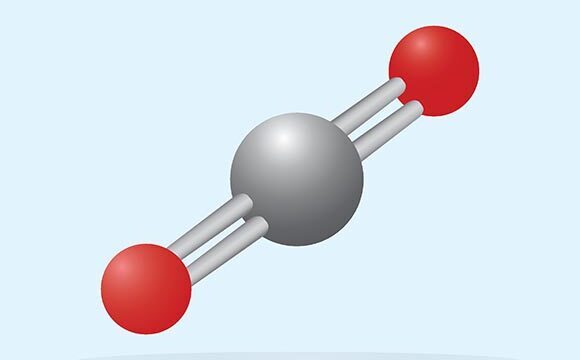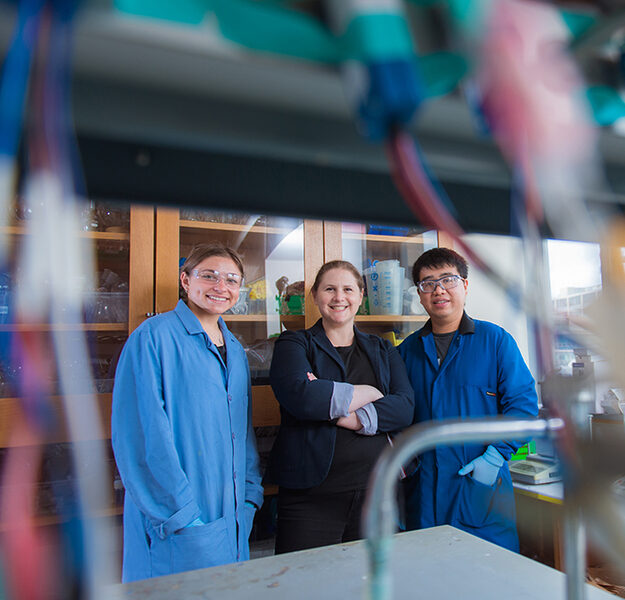DNA “Velcro” to improve electrochemical carbon dioxide reduction
Year
2022
Project team
Ariel Furst with Gang Fan and Benjamin Burke

500 gigatons
of carbon dioxide to be produced in next 50 years
Conversion
to valuable compounds would reduce emissions
First step
is reducing CO2 to CO
Repurposing carbon dioxide as feedstock
Carbon dioxide is abundant, yet has not been extensively harnessed as a potential one-carbon feedstock. Converting it to carbon monoxide is the first step toward turning carbon dioxide into valuable compounds for use in industries. Electrochemical reduction is a promising method of conversion, using catalysts placed on electrodes. However, there is little control over placing the catalysts, which affects efficiency of the process. This team is developing a method to use the inherent self-recognition properties of DNA as “Velcro” to immobilize catalysts for CO2 reduction and improve their performance.

Turning carbon dioxide into valuable products
Assistant Professor Ariel Furst and her colleagues are looking to DNA to help guide the process